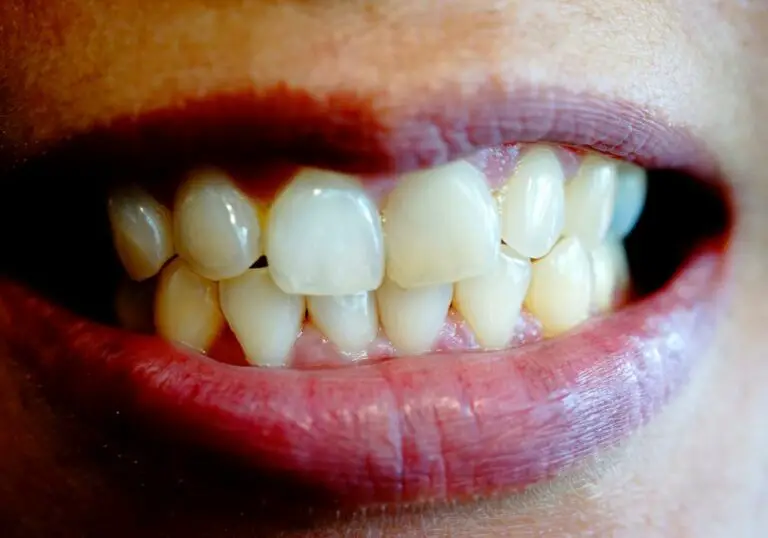Denmark is renowned globally for having exemplary dental health across its population. According to data from the World Health Organization, Denmark consistently ranks at the top for dental health statistics such as decayed, missing or filled teeth (DMFT).
The average DMFT score for a 12-year old in Denmark is an extraordinarily low 0.7, compared to scores of 3 or even 4 and above in other industrialized nations. But why exactly do the Danes have such pristine, healthy teeth? There are several key factors that contribute to Denmark’s world-class dental care system and hygiene habits.
National Focus on Preventative Dental Care

One major reason Denmark’s dental health shines is an emphasis on preventative dental care promoted at a national level. Access to regular dental treatment and check-ups allows dentists to detect issues in the early stages when they are most easily treatable. This prevents problems from escalating into complex and painful dental work.
Importantly, all dental care is provided free of charge for children and adolescents under 18 years of age in Denmark. This policy ensures that cost is never a barrier to achieving good oral health from a young age.
Approximately 98% of children take advantage of free biannual exams and other dental services. Denmark also has a robust system of municipal dental clinics located throughout the country, even in rural areas, to guarantee access.
In addition to clinical resources, Denmark implements nationwide public health information campaigns on television, radio and social media to promote oral hygiene and educate citizens on proper diet and dental care techniques. Preventative products like prescription strength fluoride toothpaste are made widely available with government subsidies.
Table 1: Dental care facts for Denmark
| Dental Care Factors | Details |
|---|---|
| Free dental care for under 18s | Yes, for all children and adolescents |
| Number of dentists per 100,000 population | 98 (very high) |
| Fluoridated water supply | Yes, 82% coverage nationwide |
| School dental screening | Annual check-ups from ages 6-17 |
| DMFT score at age 12 | 0.7 – extremely low |
Child Dental Care Habits
In Denmark, proper dental care habits are ingrained from a very early age. It is commonplace for parents to bring their children for a first dental check-up around 12 months old, and certainly by no later than age two. This allows the dentist to assess tooth development and educate parents on care for the teeth as they begin to emerge.
Toddlers are taught effective brushing techniques and get accustomed to daily cleaning. By the time children are 3 years old, brushing thoroughly twice per day with a smear of fluoride toothpaste is standard practice. Child dental products like electric brushes with timers and fun flavors help make brushing habitual.
Danish preschool programs dedicate time after lunch for toothbrushing as an integrated part of the daily schedule. This practice continues into daycares and kindergartens as well. Supervised brushing and dental hygiene education ensure children grow up following consistent and proper routines, which they then carry on into adolescence and adulthood.
Table 2: Child dental care timeline in Denmark
| Age | Standard practice |
|---|---|
| 12-24 months | First dental visit |
| 3 years | Twice daily brushing with fluoride toothpaste |
| Preschool | Daily group toothbrushing after meals |
School Dental Care Support

The public school system provides additional resources to bolster dental care for Danish children. Annual dental screening and examination visits are mandated at schools for all children between the ages of 6 and 17.
Dentists and hygienists come to perform checks directly in the classroom or school clinic setting. This allows them to apply preventative fluoride varnish treatments, place sealants on molars, and complete any minor procedures without time away from school.
The regular school check-ups teach children to view dental visits as a normal part of health maintenance rather than something to fear. They can ask questions and develop a rapport with dentists as authority figures. Dental health education is incorporated into the primary school curriculum as well.
Healthy Dietary Habits
The traditional Danish diet favors foods that promote dental health and avoid excessive sugar that puts teeth at risk. Sweet treats and desserts are most often enjoyed after meals rather than between them as snacks, which gives saliva time to neutralize acids.
Breakfast and lunch often center around open-faced sandwiches of rye bread topped with cheese, cold cuts, fish and vegetables. These open sandwiches typically use dense, dark rye bread containing whole grains and seeds. The coarse texture and fibrous content function as a natural toothbrush to gently scrub the teeth clean as one chews.
Milk consumption is also very high in Denmark, which provides calcium and vitamin D essential for building strong tooth enamel resistant to decay. The mineral content in the water supply adds further nutritional support. Danes take pride in eating well-balanced meals focused on quality over quantity. This reduces risk of cavities compared to heavy snacking and soft, sugary foods.
Widespread Water Fluoridation
Denmark has maintained a policy of water fluoridation since it was first introduced in the mid-1970s. Today, around 82% of the public drinking water supply contains added fluoride at recommended therapeutic levels. This has increased tooth resistance to decay across the population over time.
The concentration is carefully maintained between 0.5 to 1.5 parts per million to balance maximum dental health benefits while remaining completely safe. Areas without access to naturally fluoridated water instead receive fluoride additives through table salt fortification.
Water fluoridation does generate some controversy and opposition in Denmark as in other countries. However, mainstream dental authorities endorse it as a safe, cost-effective means of preventing tooth decay on a mass scale. It offers protection regardless of access to dental care or socioeconomic status.
Accessible Dental Care System

While preventative measures account for a large part of Denmark’s success in oral health, access to professional treatment also plays an integral role. Denmark has a strong universal healthcare system funded primarily through taxation. This allows citizens to get the dental care they need.
For routine dental visits and minor procedures, adults have a copay to cover part of the expense, with the government subsidizing the remaining cost. More extensive treatments like crowns, bridges, implants and orthodontics carry higher copays but remain reasonably affordable for most of the population compared to countries lacking public dental coverage.
Low-income individuals, pensioners, disabled and unemployed persons qualify for additional subsidies or exemptions from dental treatment expenses. This structure ensures everyone can obtain necessary dental treatment and ongoing care that supports continued oral health.
Oral Hygiene Product Use
Danes take advantage of technologically advanced dental care products to maintain excellent hygiene. Electric toothbrushes are very popular, used by 50-60% of adults and children – one of the highest rates globally.
High-quality specialty dental aids like interdental brushes, tongue cleaners, fluoride rinses, and water flossers are widely available and frequently used as well. Companies have developed gum and lozenge products containing plaque-inhibiting ingredients like xylitol and LAE specifically for the Danish market.
This indicates that dental health is treated as a priority and consumers are willing to invest in solutions. New technologies are readily adopted if they can deliver better oral hygiene results. Denmark’s market demand drives innovation and product development.
Cultural Mindset and Values
There seems to be an underlying Danish cultural mindset that places high importance on dental aesthetics and dedicates effort to proper oral hygiene habits. Straight, white, healthy teeth are associated with beauty, success, and social status.
Dentistry is regarded as a well-respected profession within the healthcare sphere. There is also perceived social expectation and norms surrounding dental appearance. As a result, people are highly motivated to comply with dental recommendations and utilize preventative services – they want their smile to fit in.
This influences individual priorities and behaviors from a young age to eat right, brush diligently, and get regular dental check-ups. Danes consider it normal, not indulgent, to invest time and money on dental health. These ingrained social values perpetuate the cycle of excellent national dental care.
Frequently Asked Questions
Why is dental care free for all children in Denmark?
The policy of free dental care for those under 18 aims to ensure that all children can access and benefit from dental services, regardless of socioeconomic status. Catching any problems early through routine care can mitigate or even prevent more serious issues that would require invasive treatment later. This is a wise public health investment that has measurably improved population-wide dental health.
Regular free care also establishes lifelong positive habits. Without financial barriers, utilization rates are very high – close to 98% of all children see a dentist biannually. Denmark views fostering excellent childhood dental health both as an individual benefit and collective gain for society.
Do Danes really have that many more dentists per person?
Yes, the dentist supply in Denmark is quite high at approximately 98 dentists per 100,000 people. This compares to only 60 dentists per 100,000 people in the United States, for example. The greater capacity and higher number of providers means more appointment availability and clinical infrastructure to support preventative services.
Denmark has worked to increase dental school class sizes and chairside funding to boost this supply. More dentists per capita directly enable actions like school dental checks and consistent hygiene visits for the population.
Is the Danish diet alone responsible for good teeth?
The Danish diet with its focus on fibrous breads, dairy, and eating patterns that limit sugar certainly promotes oral health. But it does not fully explain the outstanding teeth on its own, as sweets and erosive foods are still widely consumed. Likely more important is restricting sugar to meal times rather than constant snacking.
The comprehensive preventative care, education, and fluoride exposure from a young age better account for the acclaimed dental hygiene, supplemented by balanced nutrition. Genetics may even play a role.
Isn’t water fluoridation risky or controversial?
At the approved therapeutic levels used in Denmark of 0.5-1.5 parts per million, water fluoridation is completely safe based on decades of use and extensive scientific evidence. Higher concentrations could pose risks, but the levels are carefully controlled and monitored.
Fluoridation does generate some opposition, as critics argue mass medication is unnecessary. However, mainstream dental authorities strongly endorse it as a worthwhile public health initiative for reducing tooth decay. Many countries have adopted the Danish model.
How can regular Danes afford extensive dental treatments?
Compared to the United States which lacks comprehensive public dental coverage, costs in Denmark are quite low. While complex procedures like crowns or orthodontia still have out-of-pocket fees, these are subsidized to remain reasonably affordable for the average citizen.
Lower income individuals and pensioners qualify for further subsidies or exemptions. Private supplemental dental insurance also helps defray expenses. The main goal is that no one avoids or delays needed treatment due to expense, which then undermines their oral health over the long-term.
Conclusion
Denmark’s world-class dental health comes from an integrated, lifelong approach. Extensive preventative care starting in infancy, school system support, promotion of healthy diet, fluoridation, high utilization of care products, and affordable public access to treatment combine to create this dental utopia.
The underlying Danish culture that values dental aesthetics and makes oral health a high priority further enables the success. While no single component is solely responsible, together they offer comprehensive insights and models for how other countries can aim to improve their citizens’ dental well-being.






